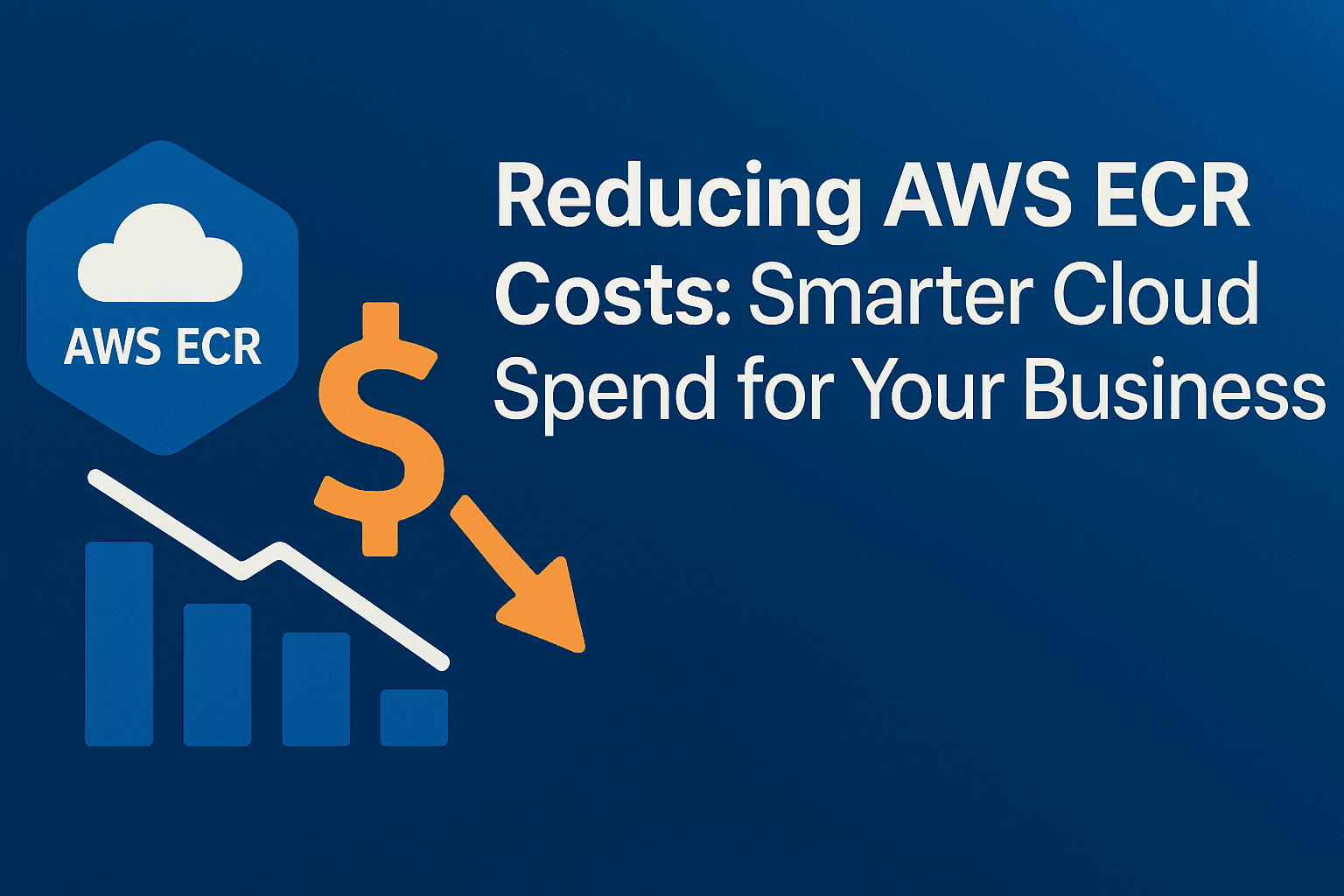Reducing AWS ECR Costs: Smarter Cloud Spend for Your Business
Demystifying Cloud Spends: Why AWS ECR Could Be Quietly Driving Up Your Bills

Nitin Garg
Founder, Zenthos
4 min read · Mon Jun 02 2025

Cloud cost optimization isn’t optional—it’s a business imperative. Many organizations overlook AWS Elastic Container Registry (ECR) as a source of hidden expenses. This guide explains why ECR storage costs quietly inflate your AWS bill and how structured lifecycle policies and lean image practices can help reduce AWS spend effectively.
What is AWS ECR?
Amazon Elastic Container Registry (ECR) is a fully managed container image registry built for the cloud. It supports:
- Private repositories for internal use and public repositories for open sharing.
- Seamless integration with ECS, EKS, and CI/CD pipelines.
At $0.10 per GB per month, ECR pricing may seem negligible. However, without oversight, image bloat and unattended repositories can transform ECR into a persistent cloud cost drain.
Why Your AWS Costs Soar: The ECR Impact
Cloud costs tied to ECR rise for three key reasons:
- Oversized Docker images — Some images balloon into gigabytes, consuming unnecessary storage.
- Image sprawl — Every build pushes a new image, and without cleanup, repositories swell with outdated versions.
- Forgotten images — Legacy production or development images sit idle and bill you silently.
This isn’t an AWS overcharge—it’s waste. But the good news: it’s fixable.
How to Optimize AWS ECR: A Cost-Driven Approach
1. Implement Lifecycle Policies for Cost Control
Lifecycle policies automate clean-up, making ECR part of your cloud cost optimization framework. Use these proven strategies:
- Expire untagged images after a short interval.
- Limit dev/test images to the latest few versions.
- Keep a minimum number of production images, but also retire very old ones.
Here’s a sample lifecycle policy you can use right away:
01{02 "rules": [03 {04 "rulePriority": 1,05 "description": "Expire untagged images >= 1 day old",06 "selection": {07 "tagStatus": "untagged",08 "countType": "sinceImagePushed",09 "countUnit": "days",10 "countNumber": 111 },12 "action": { "type": "expire" }13 },14 {15 "rulePriority": 2,16 "description": "Dev/Test: keep last 15 images; expire older",17 "selection": {18 "tagStatus": "tagged",19 "tagPrefixList": ["dev-", "test-", "feature-"],20 "countType": "imageCountMoreThan",21 "countNumber": 1522 },23 "action": { "type": "expire" }24 },25 {26 "rulePriority": 3,27 "description": "Prod: enforce a minimum floor (keep last 40)",28 "selection": {29 "tagStatus": "tagged",30 "tagPrefixList": ["prod-", "release-"],31 "countType": "imageCountMoreThan",32 "countNumber": 4033 },34 "action": { "type": "expire" }35 },36 {37 "rulePriority": 4,38 "description": "Prod: also expire images >= 365 days old",39 "selection": {40 "tagStatus": "tagged",41 "tagPrefixList": ["prod-", "release-"],42 "countType": "sinceImagePushed",43 "countUnit": "days",44 "countNumber": 36545 },46 "action": { "type": "expire" }47 }48 ]49}This policy helps balance cost savings, operational safety, and retention. It’s a solid example of how AWS ECR cost optimization works in practice.
2. Make Images Lean with Build Best Practices
Optimizing image size reduces storage cost—and speeds deployment. Techniques include:
- Multi-stage builds to ensure only essential artifacts reach production.
- Separating dev and prod dependencies to avoid bloated production images.
👉 We’ve covered this in detail here: How to Reduce the Size of Your Docker Images.
Business Benefits of ECR Cost Optimization
Adopting these strategies delivers powerful business outcomes:
- Lower cloud spend: Automated image cleanup and smaller builds directly reduce ECR storage costs.
- Faster delivery: Lean images translate to speedier deployments and higher developer productivity.
- Stronger governance: Lifecycle policies increase transparency, reduce waste, and boost financial control.
This is not just “technical cleanup”—it’s a strategic lever for business performance and ROI in your cloud operations.
Final Thoughts
Amazon ECR is an essential component of modern DevOps ecosystems—but it shouldn’t balloon into a cost sinkhole. By applying lifecycle policies like the sample above and optimizing image builds, your organization can control AWS costs while improving speed and reliability.
If you’d like to explore how these AWS ECR cost optimization strategies can be tailored to your business and channel cost savings into growth, our team is ready to consult.
👉 Book a free consultation with our cloud cost experts to discover how smarter ECR management can protect your margins and streamline your DevOps practices.
